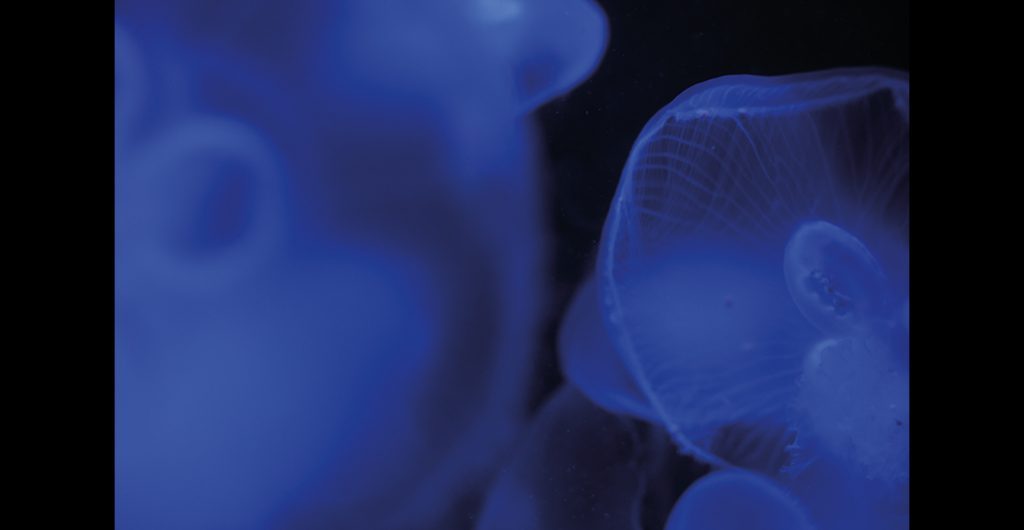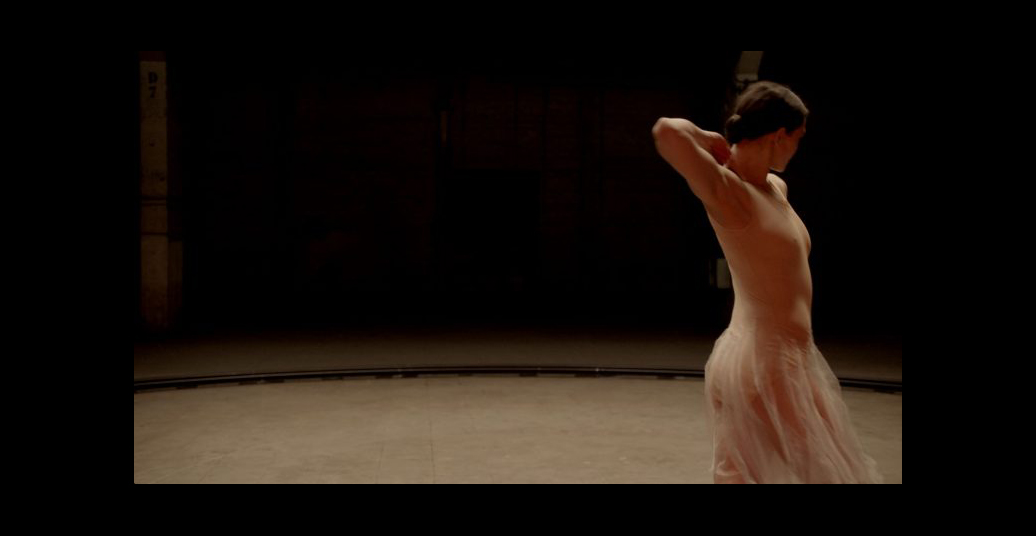In the times of corona, when live dance events are (still) not possible, the digital format remains. You can love it or leave it, and not everything is suitable for filming. However, there are dance films, films explicitly choreographed for the camera and the screen: available for viewing until 6 May in POOL 20 – Spring Edition of the Internationales TanzFilmFestival Berlin at DOCK 11 online.
Culture has been starkly affected by the corona situation, especially the performing arts. In addition to the broad selection of dance classes available online, which Jette Büchsenschütz has already reported on, the broadcast of theater and dance productions has multiplied with the closing of performance spaces. Large venues in particular are offering bits from their earlier productions, which is contentious when taking into account the legal ramifications.[1] You can love it or leave it, and not everything is suitable for filming. In my opinion, the physicality of some contemporary dance productions becomes too flat. However, screen productions of operas or classical ballets can be viewed like films (and perhaps even reach a new audience, which would otherwise not be able to afford a visit to the opera). And then there are dance films, or films choreographed with the camera and screen in mind.
The spring edition of POOL – Internationales TanzFilmFestival Berlin from 16 April to 6 May 2020 is exactly the right alternative – away from the theater and dance films and quickly shot homemade videos popping up on all manner of platforms – to still be able to experience kinesthetic empathy.[2] Around since 2007 as a routine gathering of those interested in dance film, a selection of films shown over three weeks from over the years is intended to get us in the mood for this year’s festival edition in September. Every Thursday at 7pm, the new program for the week will be released on DOCK 11 and made available for seven days.
The first week includes eleven pieces from entirely different styles, visions, and sentiments.[3] It is a journey around the world that starts on a road through the Mexican desert with “Werewolf Heart” (2016) by Christian Weber and Dalel Bacre, in which a mysterious woman (Bacre) battles her inner demons, and continues through the black-and-white shadows of a Brazilian apartment in “Apartment 502”(2017) from and with Daniele Caetano de Moura and Natasha Vergilio as a couple in love, and goes on into the forests of Poland with the science-fiction-meets-quantum-physics production “Space Nothing More” (2015) by Nikodem Wojciechowski, in which the movements of three dancers spur us to consider the micro and macrocosm. The post-urban bare concrete room in “Bandaloop”(2019) by Johan Planefeldt, in which two possessed dancers move around as if in a music video, and the garden illuminated by the full moon in “Jesus Tiger” (2014) by The House of ia, in which a ghost-like figure with a tiger mask explores the ritual of everyday, life are indeterminate in their settings.
In “Snippet” (2019) by Berit Einemo Frøysland and Anna Einemo Frøysland and in “Molino” (2017) by Jonathan Sanchez, close-ups are a priority. In “Snippet”, the clipped gestures of two women who avoid eye contact despite the socializing taking place around them that can be inferred from background noise allude to loneliness. In “Molino”, different clothing textures – first, long-haired fur, then feathers, a metal facial adornment, and finally a bearded face painted black – slowly reveal a person.
The close-up sequences from “Maktub” (2012) by Rain Kencana, in which a couple combine hip-hop, flamenco, and Zeybek dance in a repurposed Gründerzeit (founder’s period) bath house, are gripping. Just as fascinating is the concept behind “Mars & Venus: Phases d’opposition” (2016) by Julien Audebert, a visualization of the orbital paths of the planets Mars (the camera) and Venus (prima ballerina Alice Renavand from the Paris Opera). Billy Cowie and Gabriela Alcofra’s “Tango Brazil” (2014), which engages in a play between the real and unreal, is under the influence of magical realism in the way it places contemporary figures in a film from the 1930s about everyday life in Brazil. The drone perspectives from “The Shadow Drone Project” (2018) by Charles Linehan are impressive. In his images, people, animals and nature are part of choreographic gestures.
Of course some rituals disappear when viewing at home: like the walk to the projection room, the large screen, and the exchange with other people after the show. Furthermore, at home you have the opportunity to see everything all at once or take multiple breaks (you shouldn’t fast-forward or rewind at home either). However, I was able to cultivate a level of excitement, a kinesthetic empathy. It is a different type of experience from watching live performances of contemporary dance. Nevertheless, it brought me back to my sense of corporeality rather than away from it, as was the case with many screen adaptations that had an almost antiseptic effect.
Dance film or screen dance is an independent genre, which can have more or less to do with dance. Each medium has its own aesthetic and rules, something many of us have realized in these weeks of forced digitalization. For some of us, this can have a constricting effect. For others, it can be liberating.
Click here for the online streaming of POOL 20 – Spring Edition Internationales TanzFilmFestival Berlin. Still available for viewing: Film series week 2 from 23 to 29 April 2020, film series week 3 from 30 April to 6 May 2020.

POOL – Internationales TanzFilmFestival Berlin ©Barbara Dietl
English translation by Melissa Maldonado
[1] Rolf Bolwin, 26 March 2020 “Theater und Streaming, eine praktische und rechtliche Betrachtung (Theater and Streaming, a Practical and Legal View)” in Standpunkt Kultur.
[2] Karen Wood, 2016 “Kinesthetic Empathy: Conditions for Viewing” in Douglas Rosenberg (Hg.) The Oxford Handbook of Screendance Studies, Oxford, New York: Oxford University Press: 245 – 61.
[3] Film series week 1 from 16 to 22 April 2020, Line-Up:
WEREWOLF HEART | Christian Weber & Dalel Bacre | USA, Mexico 2016 | 00:04:00
APARTMENT 502 | Daniele Caetano de Moura & Natasha Vergilio | Brazil 2017 | 00:01:26
DON‘T MISS IT | Teddy Tedholm | USA 2018 | 00:04:58
MAKTUB | Rain Kencana | Germany 2012 | 00:03:15
THE SHADOW DRONE PROJECT | Charles Linehan | UK, Lithuiana 2018 | 00:09:45
SNIPPET | Berit Einemo Frøysland & Anna Einemo Frøysland | Germany 2019 | 00:00:43
MOLIMO | Jonathan Sanchez | Germany 2017 | 00:01:26
BANDALOOP | Johan Planefeldt | Germany 2019 | 00:02:20
SPACE NOTHING MORE | Nikodem Wojciechowski | Poland, 2015 | 00:21:00
TANGO BRAZIL | Gabriela Alcofra & Billy Cowie | UK 2014 | 00:03:00
JESUS TIGER | The House of ia | USA 2014 | 00:07:29
MARS & VENUS, PHASES D’OPPOSITION | Julien Audebert | France 2016 | 00:10:16




